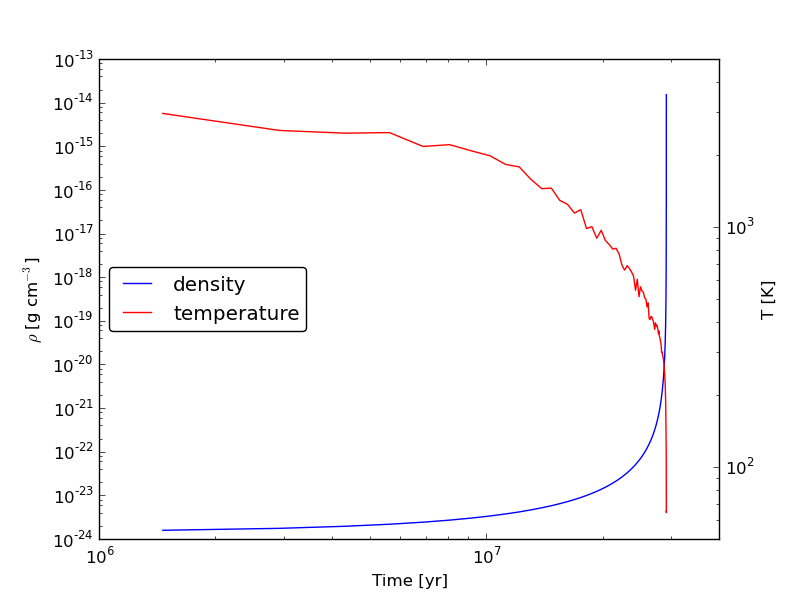The Python Examples¶
These example works with a python wrapper that calls the various library functions. These require Cython to be installed. The best thing to do is to install the yt analysis toolkit, which includes Cython.
Installing the Python Wrappers¶
After building the grackle library, some additional environment variables must be set. Move into the src/python directory and run the set_libs script and follow the instructions. Then, run python setup.py install to build and install the python wrappers.
~/grackle $ cd src/python
~/grackle/src/python $ ./set_libs
Issue the following commands:
export PYTHONPATH=$PYTHONPATH:/grackle/src/python
export LD_LIBRARY_PATH=$DYLD_LIBRARY_PATH:/grackle/src/python/../clib
You can also set your LD_LIBRARY_PATH to point to where you installed libgrackle.
~/grackle/src/python $ python setup.py install
running install
running build
running config_cc
[clipped]
running install_clib
customize UnixCCompiler
Running the Example Scripts¶
The python examples are located in the src/python/examples directory. Before running them, make sure to copy the data files from the input directory into this directory.
Cooling Rate Figure Example¶
This sets up a one-dimensional grid at a constant density with logarithmically spaced temperatures from 10 K to 109 K. Radiative cooling is disabled and the chemistry solver is iterated until the species fractions have converged. The cooling time is then calculated and used to compute the cooling rate. This script also provides a good example for setting up cosmological unit systems.
python cooling_rate.py

Free-Fall Collapse Example¶
This sets up a single grid cell with an initial number density of 1 cm-3. The density increases with time following a free-fall collapse model. As the density increases, thermal energy is added to model adiabatic compression heating. This can be useful for testing chemistry networks over a large range in density.
python freefall.py

Simulation Dataset Example¶
This provides an example of using the grackle library for calculating chemistry and cooling quantities for a pre-existing simulation dataset. To run this example, you must have yt installed and must also download the IsolatedGalaxy dataset from the yt sample data page.
python run_from_yt.py